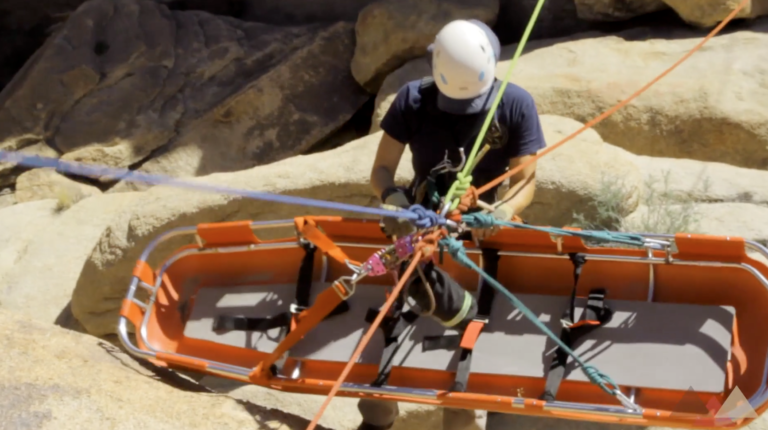Lean and Mean Rigging Machine
Introduction: Overcoming Gear Overload
We’ve all seen it—a gear closet bursting at the seams with tools, ropes, and hardware that look more like a museum exhibit than a well-oiled rescue system. While some of this gear may have been invaluable once, much of it is now collecting dust. For many rigging professionals, this cluttered chaos makes operations more complex than they need to be.
The solution isn’t to simply toss everything into the trash, but to rethink the way we manage, use, and train with our gear. By applying the 80-20 Rule (Pareto’s Law), you can transform your setup into a lean, mean rigging machine. Let’s break down how to optimize your gear cache while improving efficiency and effectiveness.
1. Keep What You Use
The 80-20 Rule suggests that 80% of outcomes come from 20% of inputs. Applied to rigging, this means most of your work relies on a small fraction of your gear. The key is identifying and maximizing this vital 20%.
Finding Your Vital Few
- Assess Your Gear: Take inventory of what you actually use during rescues or training. Log your tools for a month to determine which ones see consistent action.
- Prioritize Multi-Use Gear: Tools like the CMC MPD, Petzl ID, and AZTEK System streamline operations by serving multiple functions. These tools save space and reduce weight without compromising efficiency.
- Gear Audit Tip: Ask yourself, “What would I take if I could only carry one pack?” The gear that makes the cut should be your priority.
2. Remove What You Don’t Use
Simplifying your rigging setup doesn’t mean throwing everything away. Gear that isn’t part of your daily operations can still serve a purpose elsewhere.
Repurpose and Rehome
- Purge with Purpose: Pack unused items into a “purge box.” After a set period, review what you didn’t miss—those items are likely expendable.
- Donate to Teams in Need: Many smaller SAR teams or fire departments operate with limited budgets. Your older but functional gear could be a game-changer for them.
- Backup for Training: Store less-used items for creating unique training scenarios. Using unconventional tools can help prepare teams for unexpected challenges.
3. Embrace the Multi-Use Paradigm
The multi-use paradigm emphasizes efficiency and adaptability. In rigging, it’s not about having the most gear but having the right gear.
Why Multi-Use Tools Matter
- Carabiners and Pulleys: Do you really need four different types of carabiners or pulleys? Standardizing gear reduces complexity and enhances interoperability.
- Multi-Function Tools: Devices like the AZTEK Kit or CMC MPD combine hauling, lowering, and progress capture into one package, minimizing the need for extra hardware.
- Streamline Decision-Making: Fewer options mean faster setups and reduced cognitive load during high-stress operations.
Case Study: AZTEK System
The AZTEK is a prime example of multi-use efficiency. It functions as an anchor, pulley system, and progress capture device, all while fitting into a compact pouch. Learn more about its capabilities in this detailed breakdown.
4. Train with Less
Training with a lean setup forces creativity, resourcefulness, and teamwork. It’s not just about cutting costs—it’s about building resilience.
The Magic of Minimalist Training
- Focus on Fundamentals: Stripping down to essential gear allows teams to refine core skills without the distraction of excess equipment.
- Simulate Real-World Constraints: In the field, you rarely have access to everything you want. Training with less prepares teams for these scenarios.
- Reallocate Resources: Use savings from reduced gear purchases to invest in high-quality training workshops with experts like Pat Rhodes or Richard Delaney.
Training Example: Raising a Load with One Rescuer
Using tools like the CMC MPD and Skyhook Winch, it’s possible to perform a full raise with minimal personnel. This approach saves time, resources, and energy—critical in high-stakes situations. Explore minimalist rigging techniques here.
Why This Matters for SAR and Fire Services
For SAR teams and fire departments, efficiency isn’t just a buzzword—it’s a necessity. Reducing gear weight, streamlining setups, and training smarter all contribute to faster response times and safer operations. By adopting the lean and mean rigging philosophy, teams can enhance their effectiveness without blowing their budgets.
Internal Links for Further Learning
- Building Lightweight Rigging Systems
- What is the AZTEK System?
- Streamlining Gear for SAR Operations
- Training for Minimalist Rigging
Conclusion: Lean and Mean Rigging Machine
The 80-20 Rule isn’t just a concept—it’s a powerful framework for optimizing your rigging setup. By focusing on the vital few, rehoming unused gear, embracing multi-use tools, and training with less, you can create a lean, efficient operation that meets the demands of any mission.
Peace on your Days
Lance









